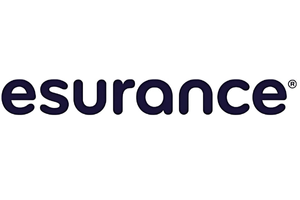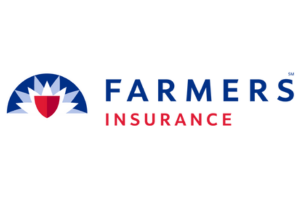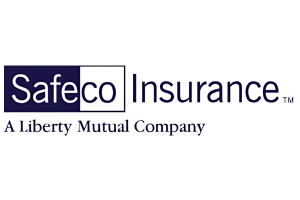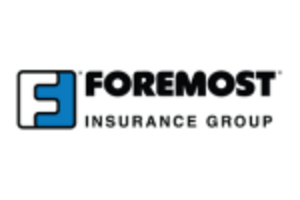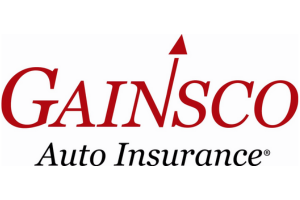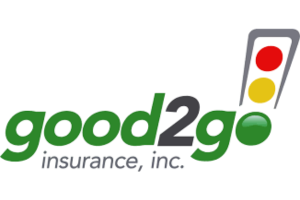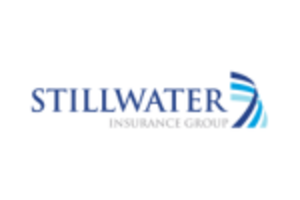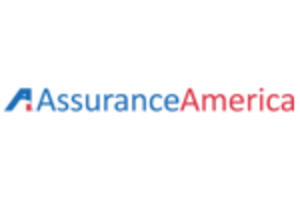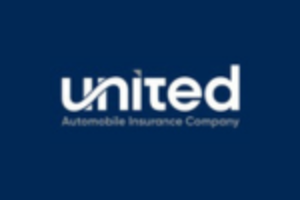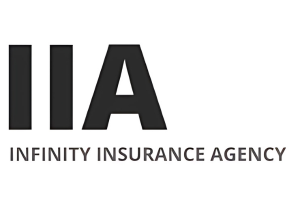Best Florida FR-44 and SR-22 Insurance in 2026
What are the Florida SR-22 requirements?
SR-22 requirements in Florida are a little different from most other states. While most states have one form required for certain high-risk drivers that have violated laws, Florida splits it into two forms: SR-22 and FR-44.
If you need to file an SR-22 form in Florida, it means you’ve been caught for driving without the minimum required insurance coverage and have been required by the state to file it with Florida’s Highway Safety and Motor Vehicle (FLHSMV). The SR22 form guarantees to the state of Florida that you have the minimum amount of insurance coverages required of you and it allows you to drive in the state. If your license was revoked, the SR22 will allow you to get your license back. Florida requires drivers who’ve been convicted of a DUI to file an FR-44.
You’ve likely heard the term SR-22 or FR-44 insurance if you’re required to file an SR22/FR-44 in Florida. While SR-22 insurance and FR-44 insurance are not actually different types of insurance from typical car insurance, the terms are often used to describe car insurance coverage for those who need an SR-22 or FR-44 endorsement because they affect your car insurance coverage and cost. In Florida, insurance after a DUI conviction costs an average of 67 % more than car insurance for standard drivers.
In Florida, the length of time you need to have SR22 insurance varies, but it’s typically about three years. In that period, you must maintain SR22 insurance continually without lapse. Your car insurance rates will be increased throughout the duration of your SR-22 filing period. Additionally, you’ll be required to have certain coverage.
If you maintain your SR-22 insurance for your required filing period and keep a clean driving record, you won’t need to file the form any longer after your period is up. This could result in your coverage and car insurance rates returning to normal, depending on your violation. If your SR22 insurance policy is cancelled at any point, by you or your insurance company, or if you have a lapse in coverage during your filing period, your license may be suspended and there will be additional fees you’ll be required to pay.
Use our comparison tool to compare insurance quotes from multiple SR-22 insurance companies.
What are the SR-22 insurance limits in Florida?
If you’re required to have SR-22 insurance in Florida, you’ll be required to have at least the following coverage:
- $10,000 for bodily injury or death per person
- $20,000 for bodily injury or death per accident
- $10,000 for property damage coverage per accident
Additionally, Florida is a no-fault state. It requires all drivers to have personal injury protection (PIP) coverage of at least $10,000.
Before you register a vehicle, you must show proof of personal injury protection and property damage liability coverage. PIP covers up to 80% of all medical expenses up to $10,000, regardless of who caused the accident. Property damage coverage pays for damages to another person's property caused by you or someone else driving your insured vehicle. Proof of these coverages must be issued by the insurance company licenced to sell policies in Florida.
What are the Florida FR-44 requirements?
In addition to the SR-22 form, Florida has another type of proof of insurance that it requires of some drivers called an FR-44 form. This form is required by drivers who’ve been convicted of a DUI or DWI. The FR-44 is much stricter than an SR22 with higher minimum limits required and stricter requirements.
Like an SR22, an FR44 is an endorsement on your Florida car insurance policy that proves to the state that you have the minimum insurance coverage required. You may be required to pay for at least 6 months of your policy upfront with FR-44 insurance.
So, an FR-44 is a document of financial responsibility in Florida, showing that you have car insurance after a driving accident like a DUI, or driving with a suspended license. When such incidents happen, the state may require you to get an FR-44 form through your insurance provider and submit it with the Florida Department of Motor Vehicles.
In Florida, the length of time you need to have FR44 insurance varies but is typically about three years. You must file the FR44 for three consecutive years. Your car insurance rates will likely be increased throughout the duration of your FR-44 filing period. Additionally, you’ll be required to have certain coverage.
What are the FR-44 insurance limits in Florida?
FR44 insurance requirements are much higher than the minimum requirements for SR22 insurance. If you’re required to have FR-44 insurance in Florida, you’ll be required to have the following coverage:
- $100,000 for bodily injury or death per person
- $300,000 for bodily injury or death per accident
- $50,000 for property damage coverage per accident
Who needs an SR22 or FR44 in Florida?
The SR22 and FR44 are both proof of insurance in Florida but they are required for different types of drivers. SR-22 insurance is required if you’ve been caught driving without the Florida minimum car insurance limits. If you had an at-fault accident and didn’t have the insurance requirements, you likely need an SR-22. Additionally, you may need SR-22 insurance for any other reason if you’re considered a high-risk driver, such as too many marks on your driving record.
If you’ve been convicted for driving under the influence (DUI or DWI), you may need FR-44 insurance.
How are Florida FR-44 insurance rates calculated?
If you need SR-22 or FR-44 insurance, your car insurance rates will likely increase significantly. When you’re required to have an SR22 or FR44 in Florida, you get placed into the category of a high-risk or non-standard driver. High-risk drivers tend to pay the highest car insurance rates, but the cost of car insurance can vary by company and by state. There are many other factors that go into the cost of SR-22 insurance such as your age, gender, location, credit score, vehicle type,financial responsibility, marital status and so on.
If you’ve been convicted of a DUI, you’ll need FR-44 insurance. On average, drivers with one DUI in Florida pay $2,909 per year for car insurance, which is 67% more than car insurance for someone with a clean record. However, the insurance cost you pay differs significantly based on the company you buy car insurance from. In the table below, you can find average rates for drivers who have had one DUI in Florida from some of the largest companies in the state.
| Company | Car insurance rate |
|---|---|
| State Farm | $1,435 |
| Progressive | $2,647 |
| Allstate | $3,019 |
| Geico | $3,376 |
These rates are based on a 35-year-old single adult with one driver and one vehicle on a policy. The car used was a 2015 Toyota Highlander LEs. Full coverage was used with 100/300/50 limits and a $500 collision and comprehensive deductible. The driver had 1 DUI on their record. The rates displayed should only be used for comparative purposes as individual rates for high-risk insurance in Florida will differ. Rate data is provided by Quadrant Information Services.
While SR-22 insurance policies are expensive, if you maintain your car insurance and SR-22 form for the duration needed all while keeping a clean driving record, your rates may go down over time.
How to get SR22 or FR44 insurance in Florida?
To get SR22 insurance or FR44 insurance in Florida, you’ll need to contact your car insurance company. An SR-22 can only be obtained through an insurance carrier; you can’t complete it on your own. If your auto insurance company offers insurance coverage to drivers who need an SR-22 or FR-44, your company can file the form with your state and offer you car insurance coverage. If not, you’ll need to shop for a new auto insurance insurance policy from a company that offers FR44 or SR22 insurance coverage.
Even if your company does offer SR22 or FR44 insurance, it may be a good idea for you to shop around for a new policy. Since SR-22 insurance and FR-44 insurance significantly affects your rates in Florida and rates can vary by company, you may want to see if a different company can offer you a better rate.
Use the table at the top of this page to find all the car insurance companies that offer SR-22 or FR44 insurance in Florida with at least 25 car insurance reviews. If you want to see which companies customers say are the best car insurance companies for SR22 insurance in Florida, sort the table by highest rated. You can sort through companies and find the ones you want to get quotes from. To get quotes, click on the orange “Click for quote” button next to the company, call the number available or visit the company’s website.
If you want to read customer reviews of the company, click the company name in the table and you will be directed to the company’s profile page containing information about the company and reviews.
If you no longer have a car but need an SR22 or FR44 in Florida in order to get your license reinstated, you will need a non-owner car insurance (SR-22 or FR-44 policy).
Are there any SR-22 and FR-44 fees in Florida?
When your insurance company files your SR-22 or FR-44 form with your state, you’ll most likely be required to pay a small fee to file it. Each form has a fee of $15. If your license was suspended, you’ll be required to pay a fee to have your license reinstated in Florida. That fee varies based on your driving record.
How are car insurance rates calculated?
When searching and comparing car insurance quotes, it can be frustrating trying to understand how your insurance rates are calculated. While there is no exact formula that each car insurance company uses when providing you with a quote, there are many factors that do contribute to the price you pay for your insurance. Among the factors that car insurers consider are:
- Your driving record
- How much you drive
- Location
- Age
- Marital status
- Gender
- Your car’s make, model and year
- Your credit history (in some states)
- Amount of car insurance coverage (required coverage and optional add-ons, such as collision and comprehensive)
One of the biggest misunderstandings when it comes to insurance rates is that the history of drivers in your area also contributes to how much you pay. For instance, even if you go two years without an accident, if there were a lot of accidents near you recently, your rates might still go up. Why is that the case?
Insurance companies disperse risk across all policyholders so that when it comes time to pay a claim, they have enough money to pay out. But imagine a scenario where they only raised rates for drivers with an accident. For drivers who had an expensive claim, drivers simply wouldn't be able to afford the raised rates that are based on how much their insurer had to pay after an accident. So instead, insurance companies slightly increase rates across the board to offset the costs, though of course, the at-fault driver may see a larger increase.
How much car insurance do I need?
You certainly don’t want to be underinsured or uninsured while staring at a claim after a car accident or other damage to your car. But at the same time, there’s no sense in paying for more coverage than you need, right? So it begs the question: How much car insurance coverage do you actually need?
The answer, as frustrating as it may be, is it depends. For example, someone insuring a brand-new, leased car is likely required to purchase collision and comprehensive coverage, but for someone driving an older car that doesn’t have much value, it may not make sense to purchase optional coverage. Plus, states have different car insurance requirements. There are 12 no-fault states that require their drivers to purchase personal injury protection (PIP).
So when it comes to determining what car insurance coverage and limits you should purchase, it’s important to do your research. Talk with an insurance agent or your insurance company to determine what makes the most sense for your situation.
How to save money on your car insurance?
At the end of the day, we’d all like to have the best coverage at a cheap, affordable price. While you never want to sacrifice quality to save a couple of dollars, there are some different ways you can lower your car insurance premium.
Here are six ways you may be able to lower your car insurance rates:
- Bundle your car insurance with other policies
- Consider raising your deductibles
- Pay your car insurance policy in full
- Try usage-based car insurance
- Monitor price changes to your policy
- Shop for better insurance rates
How do we rank car insurance companies?
Wondering how Clearsurance determines scores for insurance companies? Our algorithm analyzes a range of inputs from our community of unbiased insurance customers, including:
- Cost
- Customer Service
- Overall Experience
- Claim service
- Purchasing experience
- Likelihood to recommend
##Car Insurance Guide
Whether you’re buying your insurance directly or going through an agent, understanding the different car insurance coverage options is a must. Do you know what is covered by comprehensive coverage? Are you familiar with uninsured motorist coverage? Do you know how a deductible works?
We want to make sure you’re equipped with a proper knowledge of car insurance, so check out our practical guide to understanding car insurance. Looking for more educational information about car insurance? Check out our blog for more information and topics related to car insurance.


